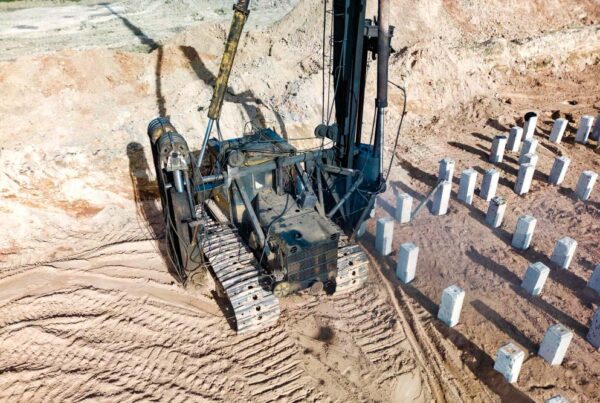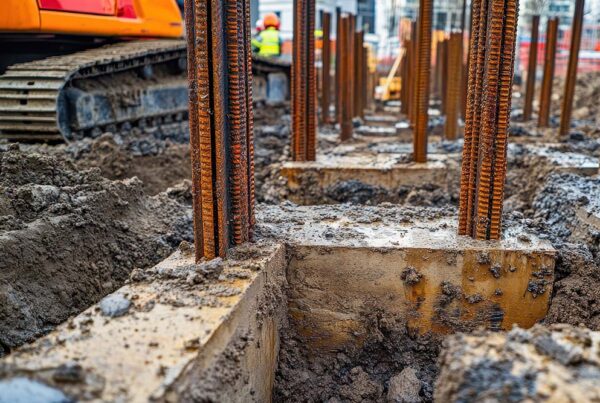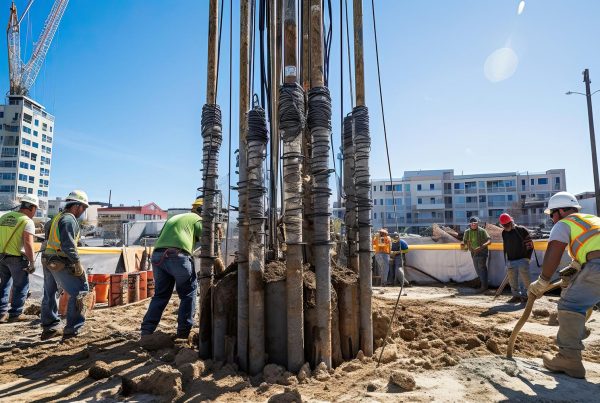Driven piles are one of the most common and reliable foundation systems used in construction. These piles are typically made of steel, concrete, or timber and are driven into the ground using a hammer. The installation of driven piles is crucial to the stability and longevity of the structure they support. This article will discuss the best practices and considerations for the successful installation of driven piles, ensuring structural integrity and performance.
1. Pre-Installation Site Assessment
Before beginning any driven pile installation, a comprehensive site assessment is necessary. Geotechnical surveys should be conducted to understand the soil conditions, load-bearing capacities, and groundwater levels. This data will help determine the type of piles required and their optimal depth. Skipping this assessment can lead to poor performance, potential foundation failure, or additional costs due to adjustments.
2. Choosing the Right Type of Piles
The selection of the appropriate pile type is essential for successful installation. Driven piles are available in various materials, including steel, concrete, and timber. Steel piles are ideal for deep foundations and heavy loads, while timber piles are suitable for light structures in soft soils. Concrete piles, often pre-cast, offer durability and strength for various projects. The decision should be based on soil conditions, structural load requirements, and environmental considerations.
3. Equipment Selection and Preparation
The proper selection of pile driving equipment is crucial for the efficient installation of driven piles. The hammer type, whether impact or vibratory, should be chosen based on the project requirements and soil conditions. Additionally, ensuring that the pile driving equipment is well-maintained and calibrated is key to achieving precise and effective pile driving. Equipment that is not correctly aligned or maintained can lead to misalignment of the piles, compromising the foundation’s stability.
4. Pile Driving Process
During the pile driving process, maintaining consistent control and monitoring is essential. The piles should be driven vertically to avoid bending or tilting. Installing piles in a controlled sequence is also important to avoid soil displacement, which can impact the stability of nearby piles. It’s essential to ensure that the driving energy is sufficient to achieve the desired penetration without damaging the pile.
5. Noise and Vibration Control
One of the main challenges of driven piles is the noise and vibration generated during installation. Construction in urban areas or near sensitive structures may require additional noise and vibration mitigation measures. Using vibratory hammers, scheduling work during less disruptive times, and employing noise barriers are all techniques that can help minimize the environmental impact of pile driving activities.
6. Quality Control and Monitoring
Continuous monitoring of the pile installation process is essential to ensure quality and performance. This includes measuring pile driving resistance, checking for pile verticality, and ensuring that the pile reaches the designed depth and load-bearing capacity. Regular inspections during and after the installation help in identifying any issues early on, allowing for adjustments as necessary.
7. Post-Installation Considerations
Once the pile installation is complete, post-installation testing such as pile load tests should be conducted to verify that the piles can support the intended structural loads. Additionally, ensuring that the installed piles are protected from potential corrosion, especially for steel piles in marine environments, is important for long-term durability and performance.
Conclusion
Installing driven piles requires careful planning, precise execution, and continuous monitoring to ensure the stability and longevity of the structure. By following the best practices for site assessment, equipment selection, noise and vibration control, and quality monitoring, construction professionals can achieve successful pile installations that provide strong and durable foundations for various structures.






